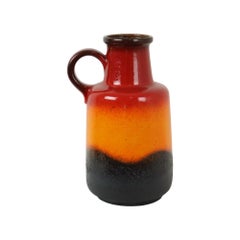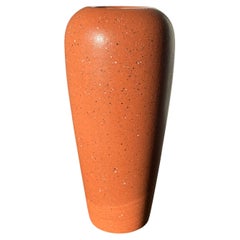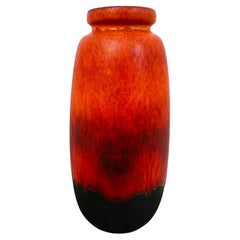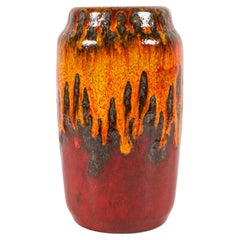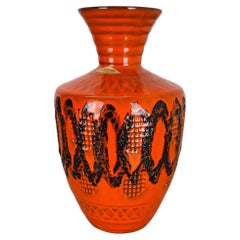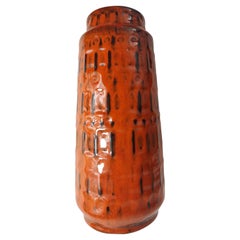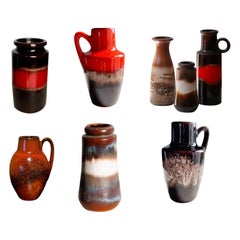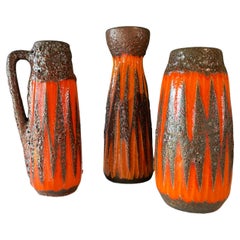Scheurich Red Orange
Vintage 1970s German Vases
Ceramic
Mid-20th Century German Mid-Century Modern Vases
Ceramic, Pottery
Mid-20th Century German Mid-Century Modern Vases
Ceramic, Pottery
Mid-20th Century Mid-Century Modern Vases
Ceramic
Mid-20th Century German Mid-Century Modern Vases
Ceramic
Vintage 1950s German Mid-Century Modern Vases
Clay, Pottery
Recent Sales
Mid-20th Century German Mid-Century Modern Vases
Ceramic
Late 20th Century German Space Age Vases
Ceramic
Vintage 1960s German Mid-Century Modern Vases
Ceramic
Mid-20th Century German Space Age Vases
Ceramic, Pottery
Mid-20th Century German Mid-Century Modern Vases
Pottery
Vintage 1950s German Mid-Century Modern Pottery
Pottery
Vintage 1970s German Mid-Century Modern Vases
Pottery
Mid-20th Century German Mid-Century Modern Vases
Pottery
Mid-20th Century German Mid-Century Modern Table Lamps
Metal
Vintage 1970s German Table Lamps
Ceramic
People Also Browsed
21st Century and Contemporary Portuguese Mid-Century Modern Armchairs
Brass
Mid-20th Century German Mid-Century Modern Vases
Ceramic, Clay
Antique 19th Century European Urns
Terracotta
Late 20th Century German Mid-Century Modern Vases
Ceramic
2010s Modern Nude Drawings and Watercolors
Archival Paper, Charcoal, Graphite
21st Century and Contemporary Italian Modern Table Lamps
Resin
Early 20th Century Chinese Sculptures and Carvings
Coral
Vintage 1960s Austrian Mid-Century Modern Chandeliers and Pendants
Crystal, Brass, Nickel
Vintage 1960s Danish Scandinavian Modern Shelves
Teak
20th Century French Art Deco Vases
Art Glass
Early 20th Century French Art Nouveau Vases
Art Glass
2010s Modern Nude Drawings and Watercolors
Charcoal, Graphite, Paper
Vintage 1980s American Hollywood Regency Coffee and Cocktail Tables
Brass
2010s Modern Nude Drawings and Watercolors
Archival Paper, Charcoal, Graphite
2010s Contemporary Nude Drawings and Watercolors
Conté, Charcoal, Archival Paper, Graphite
Vintage 1960s French Mid-Century Modern Chandeliers and Pendants
Glass, Fiberglass
Scheurich Red Orange For Sale on 1stDibs
How Much is a Scheurich Red Orange?
Finding the Right Vases for You
Whether it’s a Chinese Han dynasty glazed ceramic wine vessel, a work of Murano glass or a hand-painted Scandinavian modern stoneware piece, a fine vase brings a piece of history into your space as much as it adds a sophisticated dynamic.
Like sculptures or paintings, antique and vintage vases are considered works of fine art. Once offered as tributes to ancient rulers, vases continue to be gifted to heads of state today. Over time, decorative porcelain vases have become family heirlooms to be displayed prominently in our homes — loved pieces treasured from generation to generation.
The functional value of vases is well known. They were traditionally utilized as vessels for carrying dry goods or liquids, so some have handles and feature an opening at the top (where they flare back out). While artists have explored wildly sculptural alternatives over time, the most conventional vase shape is characterized by a bulbous base and a body with shoulders where the form curves inward.
Owing to their intrinsic functionality, vases are quite possibly versatile in ways few other art forms can match. They’re typically taller than they are wide. Some have a neck that offers height and is ideal for the stems of cut flowers. To pair with your mid-century modern decor, the right vase will be an elegant receptacle for leafy snake plants on your teak dining table, or, in the case of welcoming guests on your doorstep, a large ceramic floor vase for long tree branches or sticks — perhaps one crafted in the Art Nouveau style — works wonders.
Interior designers include vases of every type, size and style in their projects — be the canvas indoors or outdoors — often introducing a splash of color and a range of textures to an entryway or merely calling attention to nature’s asymmetries by bringing more organically shaped decorative objects into a home.
On 1stDibs, you can browse our collection of vases by material, including ceramic, glass, porcelain and more. Sizes range from tiny bud vases to massive statement pieces and every size in between.
